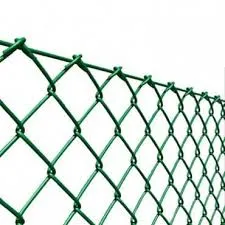Understanding Wire Wall Construction A Comprehensive Guide
Wire wall construction, also known as gabion wall construction, is an innovative method of building walls that utilize wire mesh cages filled with stones, gravel, or other materials. This construction technique has gained popularity in various applications due to its sustainability, cost-effectiveness, and aesthetic appeal. In this article, we will explore the fundamentals of wire wall construction, its benefits, and its uses in different fields.
What is Wire Wall Construction?
Wire wall construction involves creating a structure using wire mesh baskets or cages, which are then filled with natural materials like rocks or concrete blocks. These walls can serve a variety of purposes, including erosion control, landscaping, and providing structural support. The flexibility of wire walls allows for their use in diverse environments, from residential properties to large-scale civil engineering projects.
The wire cages are typically made of galvanized steel or other corrosion-resistant materials, which help ensure durability and longevity. The fill material can vary depending on the intended use and desired aesthetics. For instance, larger stones might be suitable for a robust retaining wall, while smaller, more colorful stones could be used for decorative garden walls.
Advantages of Wire Wall Construction
1. Environmental Benefits One of the significant advantages of wire wall construction is its minimal environmental impact. The materials used are often locally sourced, reducing transportation emissions. Moreover, these structures promote vegetation growth in the gaps between stones, enhancing biodiversity and providing habitats for local wildlife.
2. Cost-Effectiveness Compared to traditional masonry or concrete walls, wire walls are generally more affordable to construct. The materials and labor costs are lower since they require less specialized skill for installation. Additionally, the use of available materials minimizes expenses.
3. Flexibility and Versatility Wire walls can be constructed to fit various landscape designs and can adapt to changes over time. Their modular nature allows for easy expansion or alteration of the wall structure without complete reconstruction.
4. Drainage Properties The open structure of a wire wall facilitates excellent drainage, reducing water pressure behind the wall that can lead to failure. This feature makes wire walls ideal for use in areas prone to heavy rainfall or flooding.
wire wall construction

5. Aesthetic Appeal Wire walls can be designed to enhance the aesthetics of a property. Various fill materials, colors, and arrangements can create visually appealing landscapes. They can be used to provide a rustic charm or a modern look, depending on the project requirements.
Applications of Wire Walls
Wire walls find use in many scenarios, ranging from practical engineering solutions to creative landscaping projects
1. Erosion Control Wire walls are often employed in areas susceptible to soil erosion. Providing stable support for soil, they help prevent further erosion by allowing vegetation to grow.
2. Retaining Walls In landscaping, wire walls are an effective solution for creating terraced gardens or holding back soil in sloped areas. These walls can bear significant loads and enhance the beauty of outdoor spaces.
3. Sound Barriers In urban settings, wire walls can act as sound barriers, helping to mitigate noise pollution from busy roads or industrial areas.
4. Privacy Screens Wire walls can be filled with hedges or other greenery to create natural privacy screens for residential properties, allowing homeowners to enjoy their outdoor spaces without sacrificing seclusion.
5. Architectural Features In modern architecture, wire walls can be used decoratively in gardens, parks, and commercial spaces, contributing to innovative design elements.
Conclusion
Wire wall construction presents a unique blend of environmental sustainability, cost-effectiveness, and aesthetic versatility. As more people and industries recognize the advantages of this approach, wire walls are likely to become a mainstream choice in construction and landscaping projects. Whether used for practicality or beauty, wire wall construction provides flexible solutions tailored to a wide range of needs and settings. As we move towards greener building techniques, exploring and implementing wire wall construction offers a promising way forward.
















